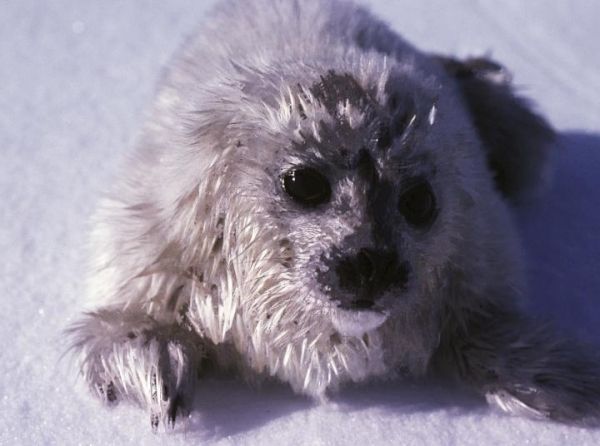Arctic sea ice is now declining at a rate of 12.8 percent per decade – 2012 had the lowest amount of summer ice on record. The drastic change has numerous implications for Arctic ecosystems, from increased shipping – the first commercial container ship crossed the Arctic Ocean in fall 2018 – to changing food webs.
But for ringed seals across the Arctic, it’s not the lack of ice that will hurt them most – it’s the lack of snow.
While ringed seals (Phoca hispida) rely on stable sea ice in order to birth pups and raise them, they also rely on sufficiently deep snow drifts in which to dig lairs, which are much like snow caves and can mean the difference between life and death. The lairs provide insulation from extreme cold and offer some protection from predators, keeping their young ones out of view from wandering polar bears – their main predator – until they are weaned. Killer whales, walruses, wolves, dogs, wolverines, sharks, and even gulls prey on pups. Along with providing shelter, there are breathing holes within the lair that allow direct access to the waters below for the seals to hunt polar and Arctic cod and a variety of planktonic crustaceans necessary for survival. During years with poor snow cover, pups can be born on the surface of the ice, but mortality of these pups that weigh only ten pounds at birth is extremely high.
Scientists have already observed and predicted that high pup mortality rates are linked to poor environmental conditions like early ice breakup and low snow. Researchers have now gone a step further by coupling these hypotheses with forecasts of future spring snow and ice conditions, developing a mathematical model, and following it to some stark conclusions for populations off the Amundsen Gulf and Prince Albert Sound in Canada.
Read more at Ecological Society of America
Image: A ringed seal pup, still covered in its white baby fur, lies exposed on the sea ice. (Credit: Ian Stirling)


